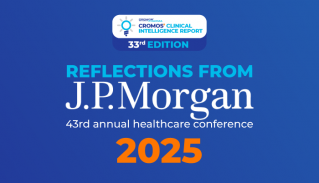
New Research Alert: Alarming Trends in Men’s Cancer Incidence & Projections to 2050
Men have long been at a higher risk of developing cancer, often due to lower engagement in preventive measures and health screenings. This lack of proactive health management has resulted in significantly higher morbidity and mortality rates for men compared to women. For example, in 2020, the cancer death rate among men was 43% higher than in women—a gap largely driven by smoking habits, with 32.6% of men smoking compared to just 6.5% of women.
A groundbreaking study recently published in Cancer highlights the urgent need for action. The study examined trends in 30 different cancers across 185 countries and projected the data out to 2050, revealing a troubling forecast: a 93% increase in cancer deaths among men by 2050 unless significant healthcare interventions are undertaken. This stark projection underscores the critical need for enhanced healthcare strategies to address this growing crisis.
Key Findings:
- 2022 Data: 10.3 million cancer cases and 5.4 million deaths among men.
- Projections for 2050: 19 million cancer cases and 10.5 million deaths, signaling a dramatic rise in the cancer burden.
- Top Killers: Lung cancer remains the leading cause of cancer death among men, with prostate cancer showing a significant projected increase in fatalities.
Economic Impact:
- The global economic burden of cancer is expected to reach a staggering $25.2 trillion between 2020 and 2050.
- Cancer incidence among men of working age is projected to rise by 39% or more by 2050.
Regional Disparities:
- In countries with a lower Human Development Index (HDI)—typically less developed nations—cancer cases and deaths are expected to more than double, increasing by approximately 140%.
- In higher HDI countries, while the increase is less dramatic, it is still significant, with cancer cases projected to rise by 50% and deaths by 64%.
Contributing Factors:
- The global rise in cancer cases is linked to demographic shifts, including population growth and aging.
- Environmental risk factors like air pollution, lifestyle choices such as tobacco and alcohol use, and rising obesity rates are also major contributors.
The study calls for stronger international collaboration and more robust public health strategies to effectively combat the rising cancer burden. Priorities include improving access to health services, enhancing cancer prevention and screening programs, and integrating comprehensive care frameworks.
For more detailed insights, read the full study here: Study Link






























